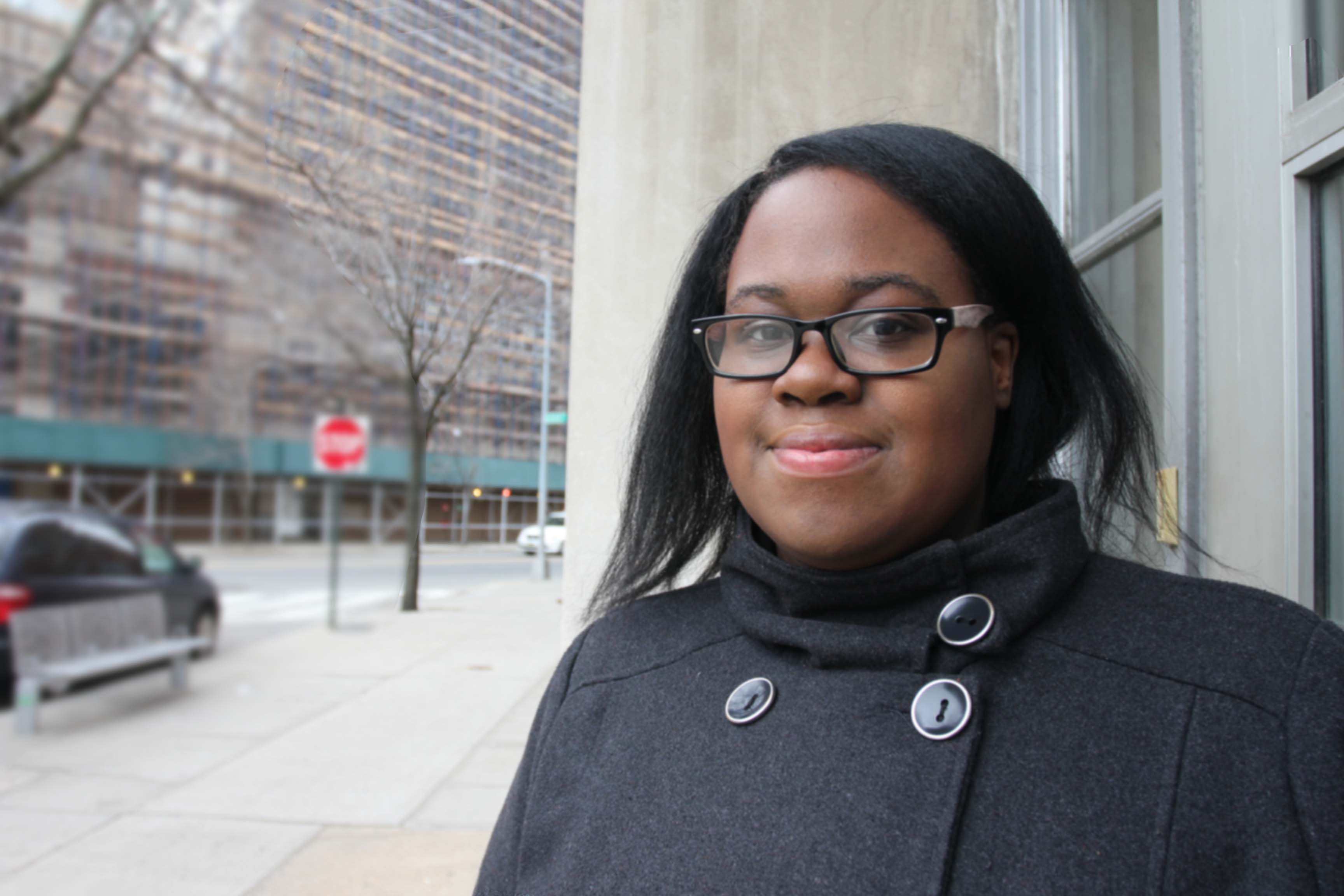This story is a part of Mixed Results for the City’s Last Chance High Schools , which focuses on the successes and failures of New York City transfer schools.
In the fall of 2013, when Odelia Kaly was 16 years old, she found herself in the hallway of an emergency room at New York Presbyterian Weill Cornell Medical Center. She was a junior at the time, in the highly competitive La Guardia High School for Performing Arts. She landed in the ER when her bouts of depression and thoughts of suicide became too overwhelming to bear.
That first night in the ward, Kaly had to wait in another hospital hallway for an available bed. A staff member watched over her every day in 24-hour shifts to prevent her from killing herself. Eventually, she was sent upstate for in-patient care that included medication.
Eight days later, Kaly returned to the city where she immediately returned to the pressures of her highly competitive high school. A pile of work awaited her. She took one look and threw it in a recycling bin. That’s when she decided to leave the high-octane high school to search for a school where she felt she could cope.

Before her high school troubles, Kaly had spent her entire Kindergarten through eighth grade school years in a small, intimate private school that offered close attention to each student. Manhattan’s well known Little Red School House had a graduating class of 44, and tuition cost at close to $40,000 a year.
When she began to think about high school, Kaly decided to go for a bigger student body. She also thought she could use some independence from her mother, who taught at Little Red for 25 years. So Kaly applied to La Guardia High School, a specialized audition-based school for 2,500 performance artists in Manhattan. She won admission to the school as a visual arts student.
“I wanted something different,” Kaly said, “because I was tired of knowing the same 40 kids.”
The stark differences between Little Red and her new high school proved to be overwhelming for her. She remembered with unease how security officers would yell at students to clear the hallways, or to refrain from eating in the library or studying in the lunchroom. As problems at home began to mount, including her own eating disorder, Kaly found herself struggling with schoolwork and connecting with friends.
Anxieties mounted and Kaly experienced a breakdown that sent her to the Emergency Room at Cornell Medical Center. By the time she went through therapy and came back to La Guardia, she knew she had to switch schools. Little Red’s adjoining high school, Elisabeth Erwin, wouldn’t take her back. Her final alternative was City-As-School, one of the city’s oldest transfer schools–schools often known as last resorts for students who don’t fit in elsewhere. “It was the greatest day ever,” Kaly said, when she learned of her acceptance into the school.
“If I was still at La Guardia, as morbid as this sounds,” Kaly said, “I would be dead right now.”
At City-As, Kaly found that teachers will work with her to create a flexible schedule for assignments. They even call her on her cell phone if she’s absent in the morning. One day, Kaly experienced an anxiety attack in the school hallway and Principal Alan Cheng stopped in the hallway to talk with her about it. At her last high school, Kaly said a security officer would have yelled at her to clear the halls.
Cheng is actively involved in the well being of individual students in City-As, where he has worked since 2006, first as a teacher and then as the school principal for the last four years. He recognizes that students end up in his school for a variety of different reasons ranging from academic difficulties to bullying, or to just not fitting in due to their dress or sexual orientation. Some come from private schools, others from foster care, and each need to learn through various forms of engagement.
City-As employs experiential learning, where students alternate between both classes and an internship every week, building crucial skills for college and the workplace.
Kaly said she is engaged in her classes at City-As, where she finds it easier to connect with teachers. One Central American history teacher who lived in Honduras until age 18 has impressed her. It’s a stark difference, she said, from her previous school’s Eurocentric curriculum.
Kaly’s internship this year was at the Integral Yoga Institute and Bluestockings bookstore in Manhattan. She was able to fulfill her economics class requirement by writing a research paper based on her internship at the bookstore, which is a volunteer run, worker-owner collective. The project focused on anarchist economics, through the lives of activist figures such as Emma Goldman and Norm Chomsky.
It wasn’t easy at first to admit to being in a transfer school, since it carries the stigma of serving failing students. Kaly’s friends would say things like, “Oh, how’s your nonschool?” Even her family seemed unsupportive of her transfer school path—Kaly’s cousin, the only family member to go to an alternative school, was the butt of jokes despite her success as a photographer in England.
Kaly currently writes for the monthly magazine, Hypocrite Reader, in which she wrote “An Open Letter to the Department of Education,” on the problems of traditional schooling through her personal experience. She also writes a fashion blog and is a columnist for the Huffington Post.
Even though Kaly still faces the challenge of juggling the stigma that comes with attending a transfer school, she is confident and content with her decision to make the switch. “In society in general, it’s hard to feel like different is not wrong,” Kaly said, “but it isn’t.” ###



